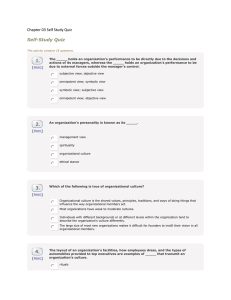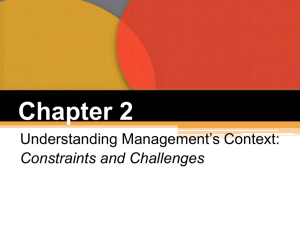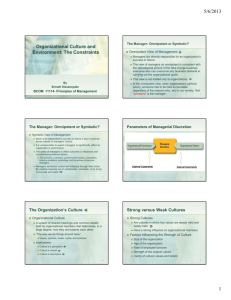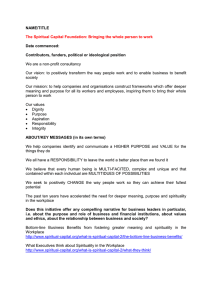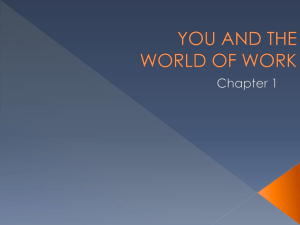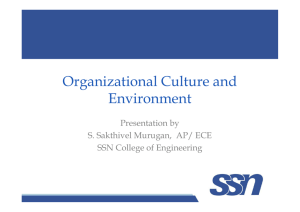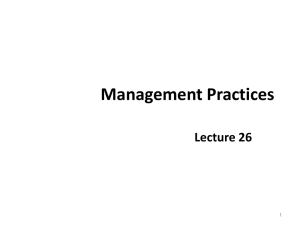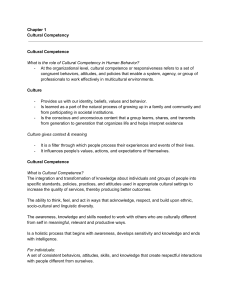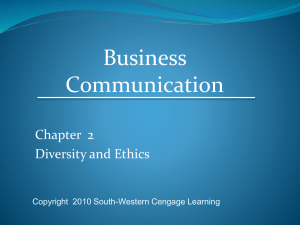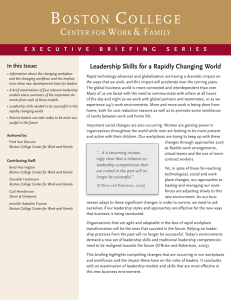File - MAJU SUPPORT
advertisement
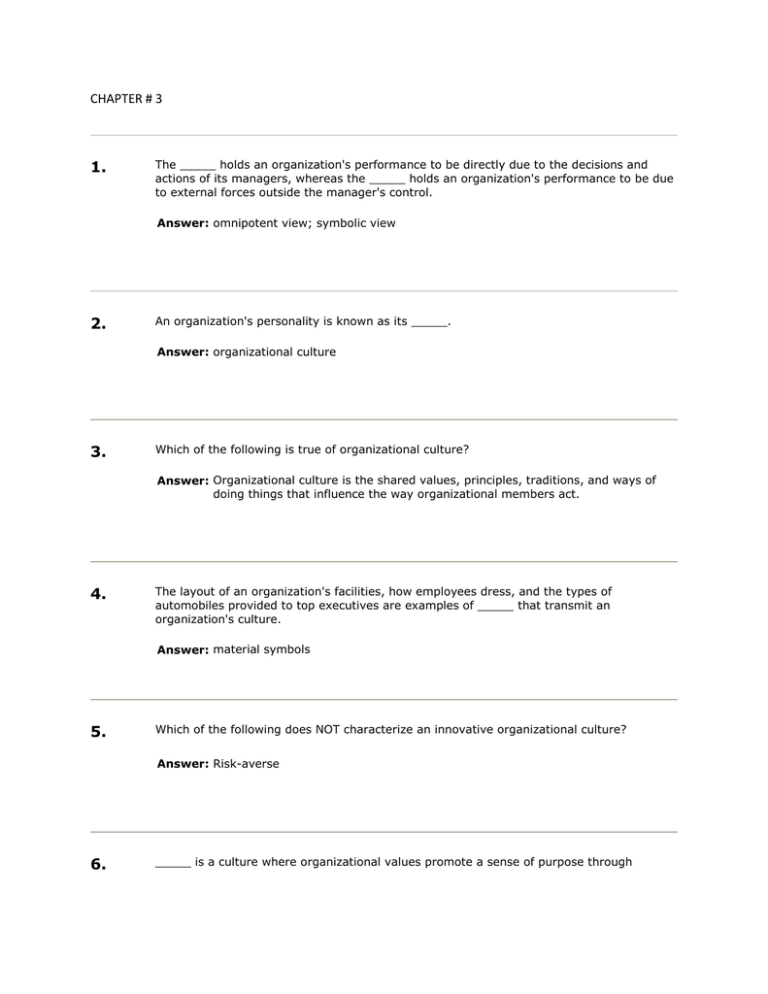
CHAPTER # 3 1. The _____ holds an organization's performance to be directly due to the decisions and actions of its managers, whereas the _____ holds an organization's performance to be due to external forces outside the manager's control. Answer: omnipotent view; symbolic view 2. An organization's personality is known as its _____. Answer: organizational culture 3. Which of the following is true of organizational culture? Answer: Organizational culture is the shared values, principles, traditions, and ways of doing things that influence the way organizational members act. 4. The layout of an organization's facilities, how employees dress, and the types of automobiles provided to top executives are examples of _____ that transmit an organization's culture. Answer: material symbols 5. Which of the following does NOT characterize an innovative organizational culture? Answer: Risk-averse 6. _____ is a culture where organizational values promote a sense of purpose through meaningful work that takes place in the context of community. Answer: Workplace spirituality 7. Which of the following is NOT one of the typical characteristics of spiritual organizations? Answer: Weak sense of purpose 8. Which of the following is true of spiritual organizations? Answer: Managers trust employees to make thoughtful and conscientious decisions. 9. The _____ includes those external forces that directly impact an organization, while the _____ includes those external forces that don't directly impact the organization, but which managers must consider. Answer: specific environment; general environment 10. The degree of _____ refers to the number of components in an organization's environment and the extent of the knowledge that the organization has about those components. Answer: environmental complexity 11. The symbolic view is the dominant view of management in both management theory and society in general. Answer: False 12. The omnipotent view of management is limited to management within business organizations. Answer: False 13. Strong cultures have a greater influence on employees than do weak cultures. Answer: True 14. The original source of an organization's culture usually reflects the vision or mission of the organization's founders. Answer: True 15. The constraints placed on managers by an organizational culture are typically explicitly written out. Answer: False 16. An organization's culture has no bearing on ethics and innovation in the workplace. Answer: False 17. Successful organizations in all types of industries need cultures that support innovation. Answer: True 18. Organizations in which employees are punished for taking risks tend to support innovation. Answer: False 19. Workplace spirituality specifically refers to a focus on organized religion within the organization. Answer: False 20. Predictable seasonal changes in ice cream consumption represent dynamic environmental change for Dora's Desert Delights. Answer: False

